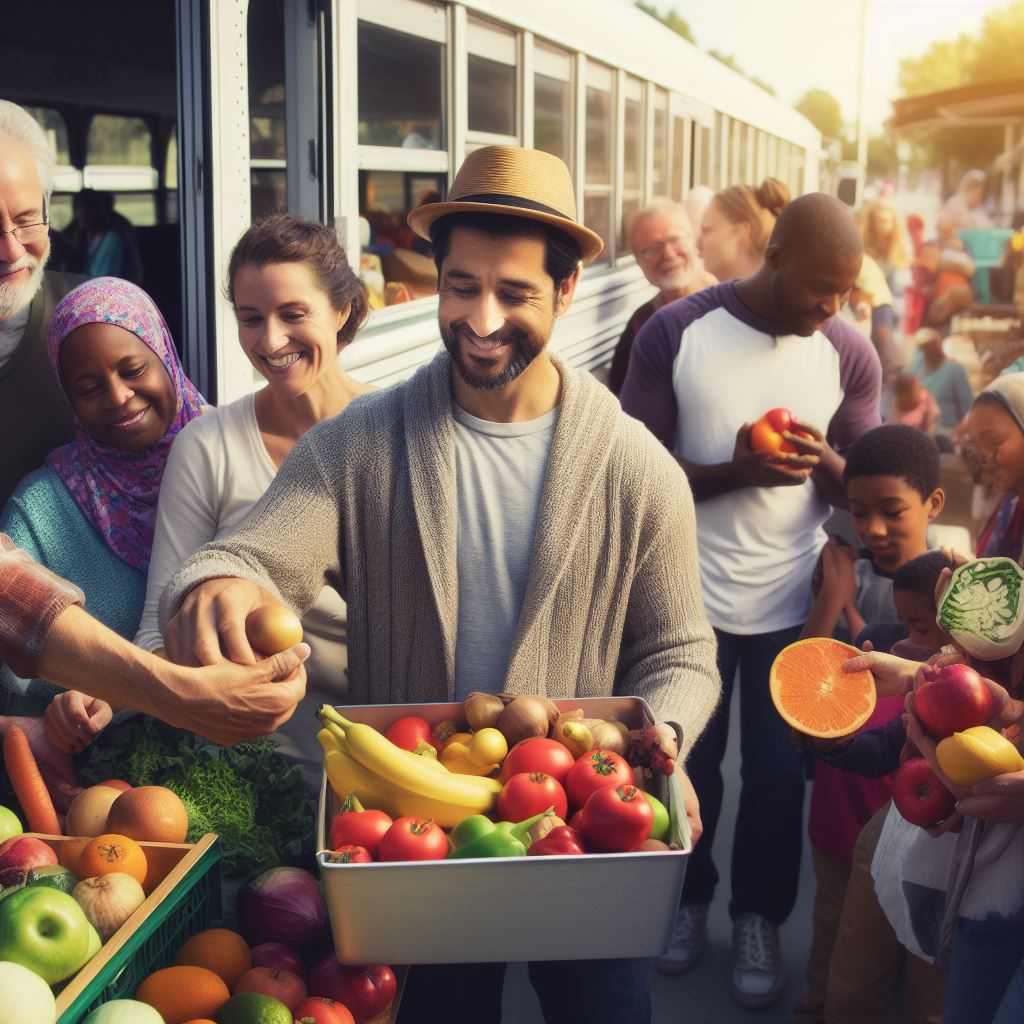7 Best Ways Immigrants Can Access Nutrition Assistance

Did you know that there are 7 best ways immigrants can access nutrition assistance?
Whether you’re struggling to put food on the table or simply looking for some extra support, these programs can make a significant difference in your life.
From the Supplemental Nutrition Assistance Program (SNAP) to local food pantries and community gardens, there are resources available to help you and your family stay nourished.
Let’s explore these options and empower you to access the assistance you need.
Key Takeaways
- Qualified immigrants, refugees, asylees, victims of human trafficking, and certain non-immigrant visa holders may be eligible for SNAP benefits.
- Lawful permanent residents (green card holders), refugees, and those granted asylum are generally eligible for SNAP benefits.
- Immigrants must meet specific eligibility criteria and income requirements to access SNAP benefits.
- Collaborating with local organizations and utilizing bilingual staff or interpreters can help educate immigrants about SNAP benefits and application requirements.
Eligibility Requirements
To determine if you qualify for nutrition assistance as an immigrant, you need to meet certain eligibility requirements. The United States Department of Agriculture (USDA) oversees the Supplemental Nutrition Assistance Program (SNAP), which provides eligible low-income individuals and families with funds for purchasing nutritious food.
As an immigrant, you may be eligible for SNAP benefits if you fall into one of the following categories: qualified immigrants, refugees, asylees, victims of human trafficking, and certain non-immigrant visa holders. Qualified immigrants include lawful permanent residents (green card holders), refugees, and those granted asylum. They’re generally eligible for SNAP benefits, as long as they meet other program requirements. Refugees and asylees are eligible for SNAP benefits for up to seven years from their date of entry into the United States. Non-immigrant visa holders, such as students or temporary workers, may also be eligible for SNAP benefits if they meet certain criteria, such as having a child under the age of 18 or being disabled.
To apply for nutrition assistance as an immigrant, you’ll need to provide documentation to prove your immigration status, such as your green card or immigration paperwork. It’s important to note that receiving SNAP benefits doesn’t make you a public charge and shouldn’t negatively impact your immigration status.
Supplemental Nutrition Assistance Program (SNAP)
To access nutrition assistance through the Supplemental Nutrition Assistance Program (SNAP), immigrants must meet certain eligibility criteria. This includes having a valid immigration status and meeting income requirements.
Additionally, SNAP provides language access services to ensure that non-English speakers can access and understand the program.
Community outreach efforts are also in place to inform and assist immigrants in applying for SNAP benefits.
SNAP Eligibility for Immigrants
When applying for SNAP benefits, immigrants can determine their eligibility by providing necessary documentation and meeting specific requirements. Here are some key points to keep in mind:
- Immigrants who are lawful permanent residents (green card holders) are generally eligible for SNAP benefits.
- Certain categories of immigrants, such as refugees, asylees, and victims of trafficking, may be eligible for SNAP benefits regardless of their immigration status.
- Immigrants who’ve been in the United States for less than five years may be eligible for SNAP benefits if they meet certain criteria, such as having a child under the age of 18 or being pregnant.
- Immigrants who aren’t eligible for SNAP benefits themselves may still apply for benefits on behalf of eligible family members, such as their children.
For more detailed information on SNAP eligibility for immigrants, it’s recommended to consult the official SNAP website or contact local SNAP offices.
Language Access for SNAP
If you are an immigrant eligible for SNAP benefits, ensuring language access is crucial in navigating the Supplemental Nutrition Assistance Program (SNAP). Language barriers can make it challenging to understand the program’s requirements, application process, and available resources. SNAP provides language access services to help individuals who have limited English proficiency. These services include multilingual materials, interpretation services, and translated application forms. The table below highlights the language access services available for SNAP:
| Language Access Services for SNAP |
|---|
| Multilingual materials |
| Interpretation services |
| Translated application forms |
| Language assistance hotlines |
| Website translation |
Community Outreach for SNAP
Make the most of community outreach opportunities to ensure immigrants can access the Supplemental Nutrition Assistance Program (SNAP) easily. Community outreach plays a crucial role in raising awareness about SNAP and helping eligible immigrants navigate the application process.
Here are four ways community outreach can support immigrants in accessing SNAP:
- Partner with local organizations: Collaborate with community centers, places of worship, and non-profit organizations to reach out to immigrants and provide information about SNAP eligibility and application procedures.
- Conduct workshops and information sessions: Organize workshops and information sessions to educate immigrants about the benefits of SNAP, how to apply, and the necessary documentation required.
- Utilize bilingual staff and interpreters: Ensure that outreach activities are conducted by bilingual staff or interpreters who can effectively communicate with immigrants in their native language.
- Provide one-on-one assistance: Offer personalized assistance to immigrants by assigning caseworkers or volunteers who can guide them through the SNAP application process.
Women, Infants, and Children (WIC) Program
To access the Women, Infants, and Children (WIC) Program as an immigrant, you can apply for nutritional assistance specifically designed for women, infants, and children. The WIC Program aims to improve the health and well-being of low-income pregnant women, new mothers, and young children by providing them with nutritious foods, nutrition education, and access to healthcare services.
As an immigrant, you may be eligible for WIC if you meet certain income requirements and are pregnant, postpartum, or have children under the age of five. The program offers a variety of benefits, including checks that can be used to purchase healthy foods like fruits, vegetables, whole grains, dairy products, and infant formula.
Here is a table that summarizes the eligibility requirements for the WIC Program:
| Eligibility Requirements |
|---|
| Low-income |
| Pregnant or postpartum |
| Have children under 5 |
It’s important to note that the WIC Program is available in all 50 states, the District of Columbia, and U.S. territories. To apply, you will need to contact your local WIC office or health department. They will guide you through the application process and determine your eligibility. Remember, the WIC Program is designed to support the nutritional needs of women, infants, and children, so if you meet the criteria, don’t hesitate to apply and take advantage of this valuable resource.
School Meal Programs
You can access school meal programs to receive nutrition assistance as an immigrant. These programs provide meals to students who may not have regular access to nutritious food at home. Here are some key points about school meal programs:
- Eligibility: Most school meal programs are available to all students, regardless of immigration status. The National School Lunch Program (NSLP) and the School Breakfast Program (SBP) provide free or reduced-price meals to students from low-income families. The eligibility criteria vary by state, so it’s important to check with your local school district.
- Application Process: To apply for school meal programs, you’ll need to complete an application form provided by the school. The form typically requires information about household income and family size. Be sure to provide accurate information to ensure eligibility determination.
- Benefits: School meals offer a balanced diet, including fruits, vegetables, whole grains, and protein sources. They can contribute to the overall health and well-being of students, improving their ability to focus and learn.
- Confidentiality: Schools are required to keep your application information confidential. Your immigration status won’t be shared with immigration authorities.
Food Pantries and Community Gardens
Food pantries and community gardens are valuable local food resources that can greatly improve food access for immigrants.
Food pantries provide a wide variety of nutritious food options, allowing individuals and families to meet their dietary needs.
Additionally, community gardens offer an opportunity for immigrants to grow their own fresh produce, fostering a sense of community and self-sufficiency.
These resources not only address the immediate food needs of immigrants but also contribute to the development of strong community support networks.
Local Food Resources
- Explore the numerous options available in your community for accessing local food resources, such as food pantries and community gardens. These resources can provide you with fresh produce and groceries, ensuring you have access to nutritious food. Here are some key points to consider:
- Food Pantries: Many communities have food pantries that offer free or low-cost food. These pantries often distribute non-perishable items, canned goods, and even fresh produce. They may also provide assistance with applying for government nutrition programs.
- Community Gardens: These gardens provide an opportunity to grow your own food, fostering self-sufficiency and promoting healthy eating habits. Community gardens often offer plots of land where individuals can grow their own fruits, vegetables, and herbs.
- Farmer’s Markets: These markets are a great place to find locally grown, fresh produce. They often accept government nutrition program benefits, making it easier to access nutritious food.
- Nonprofit Organizations: Some nonprofit organizations work to address food insecurity and provide assistance to individuals and families in need. They may offer food distribution programs or connect you with resources in your community.
Improving Food Access
By utilizing local food resources such as food pantries and community gardens, immigrants can improve their access to nutritious food. Food pantries are organizations that provide food to those in need, and many of them offer culturally diverse food options that cater to the specific dietary needs and preferences of immigrants. These pantries often distribute fresh fruits, vegetables, and other healthy staples that can support a balanced diet.
Community gardens, on the other hand, offer a unique opportunity for immigrants to grow their own produce and engage in a supportive social environment. By participating in community gardening initiatives, immigrants can access fresh, affordable, and culturally relevant food, while also building connections with their neighbors.
These food resources not only improve access to nutritious options but also foster a sense of community and empowerment.
Transitioning to the next section, it’s important to explore the role of community support networks in further enhancing immigrants’ nutrition assistance.
Community Support Networks
To maximize your access to nutritious food, take advantage of community support networks like food pantries and community gardens. These networks can provide you with fresh produce, pantry staples, and a supportive community. Here are some ways you can benefit from these resources:
- Food Pantries: These organizations distribute food to individuals and families in need. They offer a variety of food items, including fruits, vegetables, grains, and proteins. Some food pantries also provide culturally appropriate options to cater to diverse dietary needs.
- Community Gardens: Joining a community garden allows you to grow your own fruits and vegetables. Not only does it empower you to have control over your food choices, but it also fosters a sense of community and connection with fellow gardeners.
- Volunteer Opportunities: Many community support networks rely on volunteers to operate efficiently. By volunteering, you can give back to your community while also gaining access to additional resources and networking opportunities.
- Education and Workshops: Community support networks often offer educational programs and workshops on topics such as nutrition, cooking, and gardening. These resources can help you improve your knowledge and skills to make healthier food choices.
By taking advantage of these community support networks, you can enhance your access to nutritious food and build a stronger support system.
Transitioning into the subsequent section about ‘local and state assistance programs’, you can also explore the options provided by your local and state government to further support your nutritional needs.
Local and State Assistance Programs
You can access nutrition assistance through various local and state programs. These programs are designed to provide support to individuals and families who may be struggling to meet their nutritional needs.
One such program is the Supplemental Nutrition Assistance Program (SNAP), which is administered by the U.S. Department of Agriculture (USDA). SNAP provides eligible individuals with funds that can be used to purchase food at authorized retailers. Eligibility for SNAP is based on factors such as income, household size, and immigration status.
Many states also offer their own nutrition assistance programs, which may have different eligibility requirements and benefits. For example, California has the CalFresh program, which provides electronic benefit transfer (EBT) cards to eligible individuals and families. These cards can be used to purchase a variety of nutritious foods.
Local assistance programs, such as food banks and food pantries, can also provide support to individuals and families in need. These programs often rely on donations from the community and can offer a range of food options.
In addition to local and state assistance programs, there are also nonprofit organizations and charities that provide nutrition assistance to immigrants. These organizations often have specific programs and services tailored to the needs of immigrant populations, such as language assistance and culturally appropriate food options.
By accessing these local and state programs, as well as nonprofit organizations and charities, you can find the support you need to ensure access to nutritious food for yourself and your family.
Transition: In addition to local and state assistance programs, nonprofit organizations and charities also play a crucial role in providing nutrition assistance to immigrants.
Nonprofit Organizations and Charities
Nonprofit organizations and charities play a crucial role in providing immigrants with nutrition assistance through their tailored programs and services. These organizations understand the unique challenges immigrants face in accessing nutritious food and aim to bridge the gap. Here are some ways nonprofit organizations and charities support immigrants in accessing nutrition assistance:
- Food Pantries and Distribution Centers: Many nonprofit organizations operate food pantries and distribution centers that provide immigrants with free or low-cost groceries and fresh produce. These resources ensure that immigrants have access to the essential food items they need to meet their nutritional needs.
- Community Gardens: Some nonprofit organizations and charities establish community gardens in immigrant communities. These gardens enable immigrants to grow their own fruits, vegetables, and herbs, promoting self-sufficiency and healthy eating habits.
- Cooking and Nutrition Classes: Nonprofit organizations often offer cooking and nutrition classes specifically designed for immigrants. These classes teach essential cooking skills, educate immigrants about healthy eating habits, and provide them with practical knowledge to make nutritious meals on a budget.
- Referrals and Advocacy: Nonprofit organizations and charities often act as a bridge between immigrants and other community resources. They provide referrals to government assistance programs, healthcare services, and other organizations that can help immigrants access nutrition assistance.
Frequently Asked Questions
Are There Any Nutrition Assistance Programs Specifically Designed for Immigrants?
Are there nutrition assistance programs for immigrants? Yes, there are. These programs are specifically designed to help immigrants access the nutrition assistance they need.
Are There Any Income Limits for Eligibility in Nutrition Assistance Programs?
There are income limits for eligibility in nutrition assistance programs. These limits determine if you qualify for benefits. You should check the specific program requirements to see if your income falls within the limits.
Can Undocumented Immigrants Access Nutrition Assistance Programs?
Undocumented immigrants are not eligible for federal nutrition assistance programs. However, they may still be able to access assistance through local and state programs, nonprofits, and food banks.
What Types of Foods Are Typically Provided Through Nutrition Assistance Programs?
You can find a variety of healthy foods through nutrition assistance programs. These programs typically provide fresh fruits and vegetables, whole grains, lean proteins, and dairy products to ensure a balanced diet.
Are There Any Additional Resources or Services Available to Immigrants Through These Nutrition Assistance Programs?
There are additional resources and services available to immigrants through nutrition assistance programs. These programs aim to provide access to healthy foods and nutrition education. You can find local organizations that offer assistance by contacting your nearest food bank or community center.



